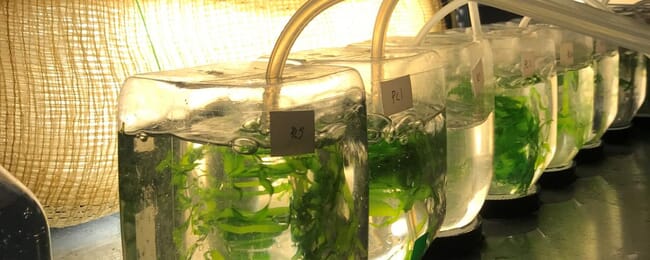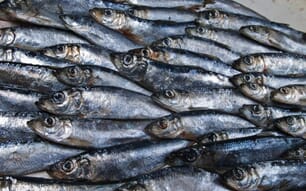
© Kristoffer Stedt
Researchers from Gothenburg University and Chalmers University of Technology say that process water can be transformed from an economic loss to a key resource for the food industry. A scientific article from the researchers shows that process water from food production can serve as an excellent fertiliser in seaweed cultivation. The seaweed grew more than 60 percent faster and the protein content quadrupled with the addition of process water.
Macroalgae like sea lettuce and seaweed is emerging as a competitive source of protein and could be a key food source in the future. However, seaweed tends to have a lower protein content than other crops like soybeans – but if seaweed producers use fertilisers, that difference begins to decrease.
“The protein content of soybeans is about 40 percent. By using process water, we have increased the protein content in the seaweed to more than 30 percent,” says Kristoffer Stedt, a doctoral student at the Department of Marine Sciences at the University of Gothenburg.
We already know that algae grow better in the vicinity of fish farms in the sea due to nutrients in fish faeces that spread in the water. Process water from food industries is often rich in nitrogen and phosphorus in a similar way.
Different food producers
The researchers tested four different types of seaweed and added process water from several different food producers – from the herring industry, salmon farming, shellfish processors and a manufacturer of oat milk. A certain amount of process water with a controlled content of nitrogen was added to the seaweed cultivation. After eight days the researchers analysed the results.
“We included oat milk to achieve cultivation that was completely vegan. And it turned out that all different types of process water worked well as fertiliser for the seaweed,” says Stedt.

Food production requires large amounts of water and taking care of the process water is currently a cost for producers. But this water can be turned into a valuable resource.
“We think that you could have land-based cultivations of algae, such as sea lettuce, near a herring factory, for example. Seaweed cultivation can cleanse large portions of the nutrients from the process water. That brings us closer to a sustainable approach, and the companies have another leg to stand on,” says Stedt.
No off-taste for the seaweed
The researchers were worried that the seaweed would be tainted by the process water. Not everyone may appreciate herring-flavoured sea lettuce. But test panels did not note any impact on the taste of the seaweed from the process water.
In the future, Kristoffer Stedt and his colleagues will focus on scaling up the experiments with seaweed cultivation. They will use process water from the herring industry, which showed very promising results, and focus on the species Ulva fenestrata (sea lettuce).
“We need to conduct tests in larger volumes as a first step in a controlled environment. But we believe that this may be an alternative source of protein in future foods. It could also be a completely circular system if we used cultivated seaweed as feed for salmon culture on land and used the process water to fertilise the seaweed cultivation,” says Stedt.




